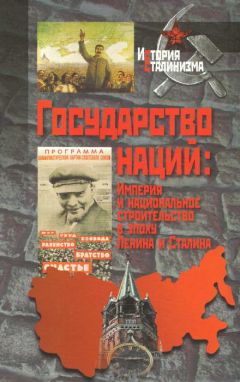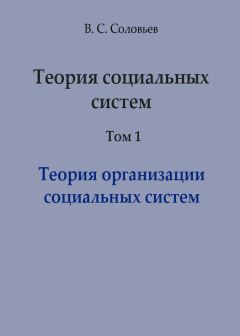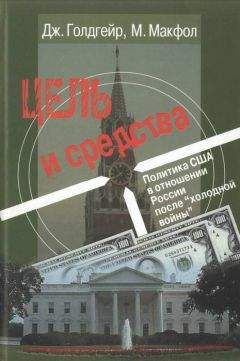Артур Миллер - Империя звезд, или Белые карлики и черные дыры
ЭЙНШТЕЙН АЛЬБЕРТ (1879–1955) — бесспорно, самый крупный и самый знаменитый физик XX века. Его основные открытия — специальная и общая теории относительности, перевернувшие все существовавшие до него представления человечества о Вселенной, о пространстве и времени. Вывел самое знаменитое уравнение в мире — E = mc2, (но не желал признавать существование наиболее яркого следствия из своих работ — возникновения черных дыр). Лауреат Нобелевской премии по физике 1921 года. Жил в Германии, Швейцарии, с 1933 года и до конца жизни — в США. Эйнштейн — автор множества работ по физике, а также по истории и философии науки. Его вклад в физику XX века огромен. Кроме теории относительности, он разработал квантовую теорию фотоэффекта, квантовую теорию теплоемкости, статистику Бозе-Эйнштейна, теорию броуновского движения, рассеяния света, с 1933 года занимался космологией и единой теорией поля. Эйнштейн играл большую роль в общественной жизни — выступал против войны, против применения ядерного оружия, за гуманизм, уважение прав человека, взаимопонимание между народами.
ЯНГ ЧЖЭНЬНИН (р. 1922) — американский физик китайского происхождения. В 1948–1949 годах работал в Чикагском университете, где подружился с Чандрой, с 1949 года — в Институте высших исследований в Принстоне (с 1955 года — профессор). С 1966 года — профессор и директор Института теоретической физики Университета штата Нью-Йорк (Стоуни-Брук). В 1957 г. получил (вместе с Цзундао Ли) Нобелевскую премию. Основные труды — по квантовой теории поля, теории элементарных частиц и теории фазовых переходов.
Библиография
Использованные в книге письма Чандры и архивные материалы находятся в архивах Чандрасекара в библиотеке имени Джозефа Регенстайна Чикагского университета. Статьи и корреспонденция Милна хранятся в библиотеке имени Бодлея Оксфордского университета; письма Эддингтона Уолтеру Адамсу — в библиотеке Хантингтона в Сан-Марино в Калифорнии; велосипедные дневники Эддингтона и его корреспонденция — в Тринити-колледже Кембриджского университета, а корреспонденция Стонера — в архиве Стонера Лидского университета.
Сокращения:
AIP — Niels Bohr Library. American Institute of Physics, College Park. MD USA
OHP — Oral History Project, California Institute of Technology Archives
ADAMS WALTER SYDNEY. An А-type star of very low luminosity. Publications of the Astronomical Society of the Pacific, 1914, 26, 198.
The Spectrum of the Companion of Sirius. Publications of the Astronomical Society of the Pacific, 1915, 27, 236–237.
ALVAREZ LUIS. Alvarez: Adventures of a Physicist (New York, Basic Books, 1987).
ANDERSON WILHELM. Über die Grenzdichte der Materie und der Energie. Zeitschrift fur Physik, 1929, 56, 851–856.
ASTON FRANCIS WILLIAM. Forty years of atomic theory. In: Joseph Needham and Walter Pagel (eds.) Background to Modern Science (London, Macmillan, 1938).
ATKINSON ROBERT D’ESCOURT. Atomic Synthesis and Stellar Energy. Astrophysical Journal, 1931, 73, 250–295.
A model symposium, The Observatory, 1939, 62, 281–284.
AYYAR C. SUBRAMANYAN. Details of the biography of C. Subramanya Ayyar. B. A. Chandrasekhar Archives/Box 6/Folder 5.
BAADE, WALTER AND RUDOLPH MINKOWSKI. Identification of the radio sources in Cassiopeia, Cygnus A, and Puppis A. Astrophysical Journal, 1954, 119, 206–214.
AND FRITZ ZWICKY. Supernovae and cosmic rays. Physical Review, 1934, 45, 138.
BALAKRISHNAN PURASU. Subrahmanyan Chandrasekhar. Trevini, 1945, 17, 73–85.
My brother Chandra. Aside, 1983, December, 18–29.
Chandrasekhar re-reminisced. Typescript manuscript, Chandrasekhar Archives/Box 1/Folder 10.
BETHE HANS. Energy production in stars. Physical Review, 1939, 55, 434–456.
Interview by Charles Weiner and Jagdesh Mehra, 27 October 1966, AIP.
Supernova mechanisms. Reviews of Modern Physics, 1990, 62, 801–866.
Interview by Judith Goodstein, 28 February 1993, OHP.
BURBRIDGE GEOFFREY AND MARGARET BURBRIDGE. Quasi-Stellar Objects (New York, Freeman & Company, 1967).
CHADWICK JAMES. Frederick John Marrian Stratton. Biographical Memoirs of Fellows of the Royal Society, 1961, 7, 281–293.
CHANDRASEKHAR LALITHA. Our song. Talk given after the Symposium Banquet, 14 December, 1996. Videotape on deposit at the Chandrasekhar Archives. Unpublished speech and other notes on the occasion of the TRW hospitality reception for winners of the competition to name the X-ray Satellite, probably 1999.
CHANDRASEKHAR SUBRAHMANYAN. The thermodynamics of the Compton effect with reference to the interior of stars. Indian Journal of Physics, 1928, 3, 241.
A generalized form of the new statistics. Physical Review, 1929, 34, 1204–1211.
The Compton scattering and the new statistics. Proceedings of the Royal Society A, 1929, 125, 231–237.
The ionization-formula and the new statistics. Philosophical Magazine, 1930, 9, 292–299.
The density of white dwarf stars. Philosophical Magazine, 1931, 11, 592–596.
The highly collapsed configurations of a stellar mass. Monthly Notices of the Royal Astronomical Society, 1931, 91, 456–466.
The dissociation formula according to relativistic mechanics. The Observatory, 91, 1931, 446–455.
The maximum mass of ideal white dwarfs. Astrophysical Journal, 1931, 74, 81–82.
The Equilibrium of Distorted Polytropes. Monthly Notices of the Royal Astronomical Society, 1933, 93, 390–405, 449–461, 462–471, 539–574.
The Meeting of the Royal Astronomical Society on 9 June 1933. The Observatory, 1933, 56, 215–219.
The physical state of matter in the interior of stars. The Observatory, 1934, 57, 93–99.
Stellar configurations with degenerate cores. The Observatory, 1934, 57, 373–377.
On the hypothesis of the radial ejection of high-speed atoms for the Wolf-Rayet stars and the novae. Monthly Notices of the Royal Astronomical Society, 1934, 94, 522–538.
The highly collapsed configurations of a stellar mass (second paper). Monthly Notices of the Royal Astronomical Society, 1934, 95, 207–225.
The Meeting of the Royal Astronomical Society on 11 January 1935. The Observatory, 1935, 58, 37.
Stellar configurations with degenerate cores. Monthly Notices of the Royal Astronomical Society, 95, 226-60, and Christian Moller (1935c).
Relativistic degeneracy. Monthly Notices of the Royal Astronomical Society, 95, 673–676.
Stellar configurations with degenerate cores (second paper). Monthly Notices of the Royal Astronomical Society, 1935, 95, 676–693.
The highly collapsed configurations of a stellar mass (second paper). Monthly Notices of the Royal Astronomical Society, 1935, 95, 207–225.
AND L. ROSENFELD. Production of electron pairs and the theory of stellar structure’, Nature, 1935, 135, 999.
Partially degenerate stellar configurations. Astrophysical Journal, 1937, 86, 623–625.
The cosmological constants. Nature, 1937, 139, 757.
The white dwarfs and their importance for theories of stellar evolution. In: Conferences du College de France, Colloque International d’Astrophysique, 1939, 17–23 juillet.
Study of Stellar Structure (Chicago: University of Chicago Press, 1939).
AND MARIO SCHONBERG. On the evolution of the main-sequence stars. Astrophysical Journal, 1942, 96, 161–172.
Ralph Howard Fowler, 1889–1944. Astrophysical Journal, 1945, 101, 1–5.
James Hopwood Jeans: 1877–1946. Science, 1947, 105, 224–226.
Dynamical instability of gaseous masses approaching the Schwarzschild limit in general relativity. Physical Review Letters, 1964, 12, 114–116.
The dynamical instability of gaseous masses approaching the Schwarzschild limit in general relativity. Astrophysical Journal, 1964, 140, 417–433.
The Richtmeyer Memorial Lecture — some historical notes. American Journal of Physics, 1969, 37, 577–584.
The increasing role of general relativity in astronomy. The Observatory, 1972, 92, 160–174. (Chandra’s Halley Lecture for 1972, delivered in Oxford, 2 May 1972.)
How I came periodically to change the area of my active interest after writing a book. (Addenda Box 70/Folder 6), 8 January 1975.
Shakespeare, Newton, and Beethoven, or patterns of creativity. The Nora and Edward Ryerson Lecture, delivered at the University of Chicago, 22 April, 1975. Reprinted in S. Chandrasekhar, Truth and Beauty: Aesthetics and Motivations in Science (Chicago: The University of Chicago Press, 1985), p. 29–58.
On the equations governing the perturbations of the Schwarzschild black hole. Proceedings of the Royal Society A, 1975, 343, 289–298.
The solution of Dirac’s equation in Kerr geometry. Proceedings of the Royal Society A, 1976, 349, 571–575.
Interview by Spencer Weart, 17 May 1977, AIP.
The Kerr metric and stationary axisymmetric gravitational fields. Proceedings of the Royal Society A, 1978, 358, 405–420.
I. Edward Arthur Milne. Dictated to Lalitha on 22 January 1979, edited and transcribed by her; in Chandra Archives, Addenda Box 77/Folder5 — ‘Recollections of Milne, Einstein and Fowler’.
Edward Arthur Milne — recollections and reflections. Manuscript in the AIP Niels Bohr Library and in the Chandrasekhar Archives, University of Chicago, 1979.
II. Sir Arthur Stanley Eddington, dictated to Lalitha on 3July 1980, edited and transcribed by her; in Chandra Archives, Addenda Box 77/Folder 5 — Recollections of Milne, Einstein and Fowler.
III. Ralph Howard Fowler. Dictated to Lalitha on 4 September 1980, edited and transcribed by her, in Chandra Archives, Addenda Box 77/Folder 5 — Recollections of Milne, Einstein and Fowler.
Interview with D. J. R. Bruckner, 6 August 1980, Box 2/ Folder 10.
On stars, their evolution and their stability. Nobel Lecture delivered 8 December.
1983. In: Tore Frangsmyr (ed.), Nobel Lectures in Physics: 1981–1990 (Singapore: World Scientific, 1993), 142–163.
The Mathematical Theory of Black Holes (Oxford, Clarendon Press, 1983).
Eddington: The most distinguished astrophysicist of his time. In: S. Chandrasekhar. Truth and Beauty: Aesthetics and Motivations in Science (Chicago, University of Chicago Press, 1987), 95-109.
Edward Arthur Milne: His part in the development of modern astrophysics. In: S. Chandrasekhar. Truth and Beauty: Aesthetics and Motivations in Science (Chicago: University of Chicago Press, 1987), 74–91.
At the inauguration of the Ramanujan Centennial Symposium. 1987, Addenda/Box 77/Folder 3.
Foreword to the reissue of: Arthur Stanley Eddington. The Internal Constitution of the Stars (Cambridge, UK: Cambridge University Press, ist edn, 1926; 2nd edn, 1930 with a 'Note to the second impression: Reissued with a foreword by Chandrasekhar in 1988), VII–XII.
The series paintings of Claude Monet and the landscape of general relativity. Lecture delivered at the Inter-University Centre for Astronomy and Astrophyics, Poona, India, 28 December 1992. Reprinted in S. Chandrasekhar, Selected Papers, Volume 7 (Chicago, University of Chicago Press, 1997), 135–167. Newton’s Principia for the Common Reader (Oxford, Oxford University Press, 1995). (n.d.i), Science in pre- and post-independent India. (Addenda/Box 23/Folder 1).
(n.d.2), Fragment beginning ‘I shall strictly adhere <…>’ (Addenda Box 70/Folder 6).
(n.d.3). How I came to writing my book on the Principia (Addenda Box 70/Folder 7).
(n.d.4). Historical notes on some astrophysical problems (Addenda Box 70/Folder 6).
(n.d.5), Handwritten reminiscence (Box 2/Folder 1)
The problem of stellar energy. Nature, 1938, 141, 982.
COLGATE STIRLING AND MONTGOMERY H. JOHNSON. Hydrodynamic origin of cosmic rays. Physical Review Letters, 1969, 5, 235–238.
AND RICHARD WHITE. The hydrodynamic behavior of supernovae explosions. Astrophysical Journal, 1966, 143, 626-81.
Stellar coalescence and the multiple supernova interpretation of quasi-stellar Sources. Astrophysical Journal, 1967, 150, 163–192.
COMPTON HERBERT. Indian Life in Town and Country (New York, G.P. Putnam’s, 1904).
COWLING, T.G. On a point source model of a star. Monthly Notices of the Royal Astronomical Society, 1930, 91, 92-108.
The Development of the Theory of Stellar Structure. Quarterly Journal of the Royal Astronomical Society, 1966, 7, 121–137.
Interview by David DeVorkin, 22 March 1978, AIP.
CRONIN JAMES W. Letter to the Editors. The Observatory, 1996, 118, 24.
DALTIZ RICHARD H. Some recollections of S. Chandrasekhar. In: K.C. Wali (ed.), S. Chandrasekhar: The Man Behind the Legend (London: Imperial College Press, 1997), 142–155.
DANIN D.S. The Passionate Sobriety of Youth. In: I.M. Khalatnikov (ed.), Landau: The Physicist and the Man (Oxford: Pergamon Press, 1989), 78–83.
DARWIN CHARLES G. The wave equation of the electron. Proceedings of the Royal Society A, 1928, 118, 654–680.
DEVORKIN DAVID H. Henry Norris Russell: Dean of American Astronomers (Princeton, Princeton University Press, 2000).
DIMOPOULOS SAVAS AND GREG LANDSBERG. Black Holes at the Large Hadron Collider. Physical Review Letters, 1001, 87, 161602-161604.
DIRAC P. A. M. The effect of Compton scattering by free electrons in a stellar atmosphere. Monthly Notices of the Royal Astronomical Society, 1925, 85, 825–832.
The Principles of Quantum Mechanics (Oxford, Clarendon Press, 1930).



